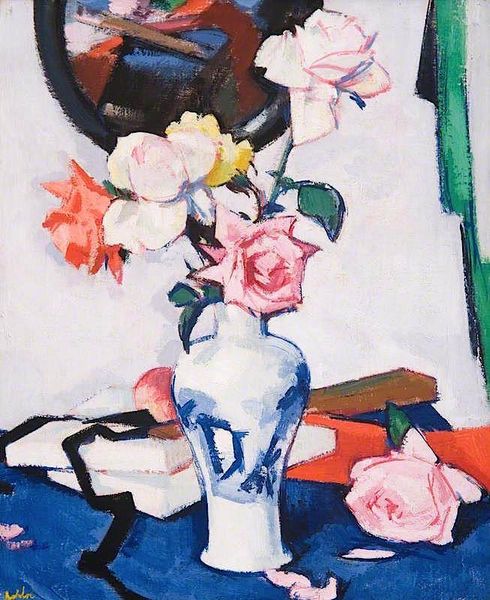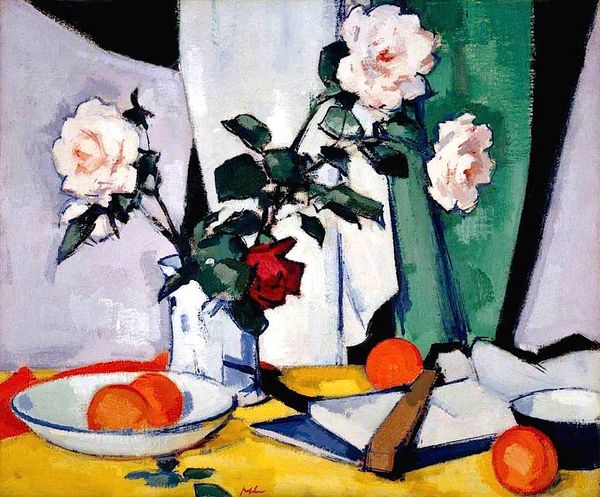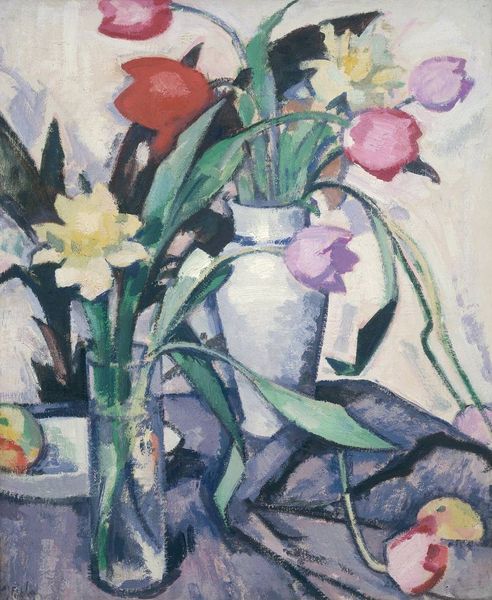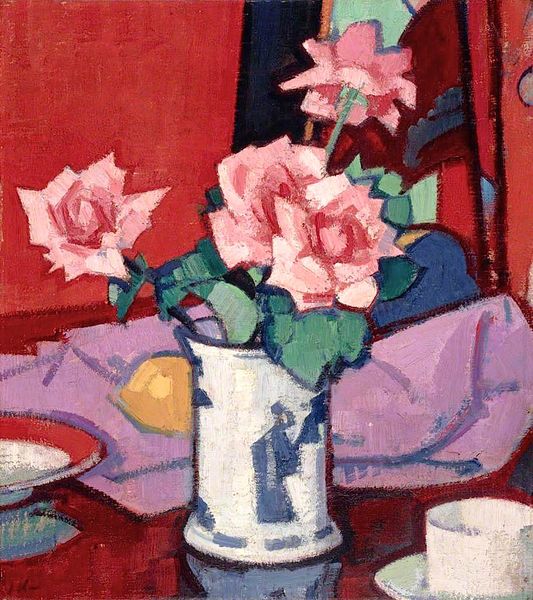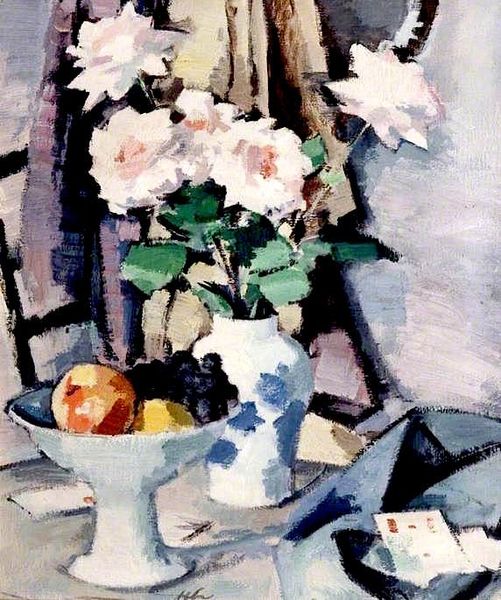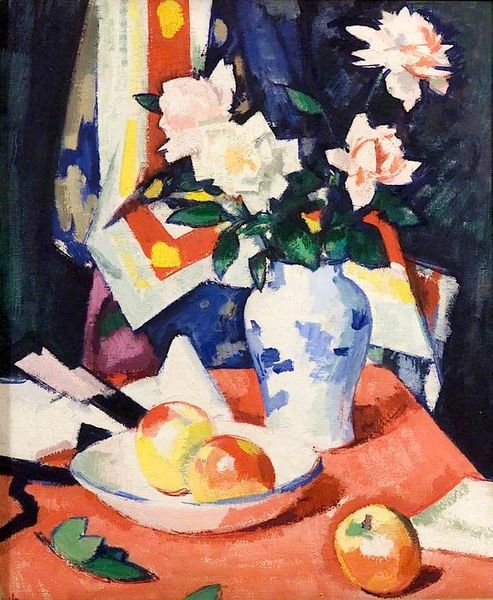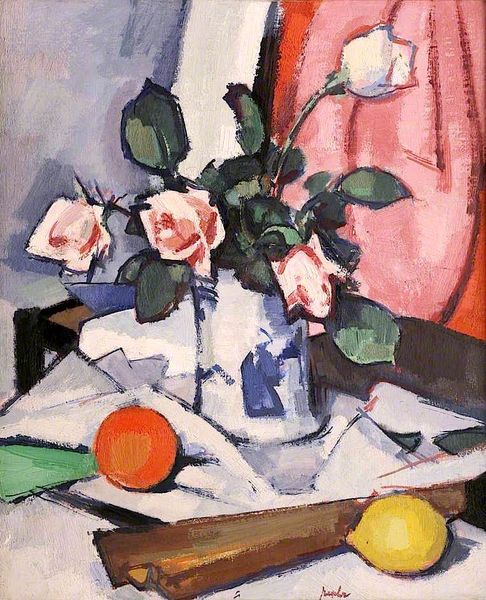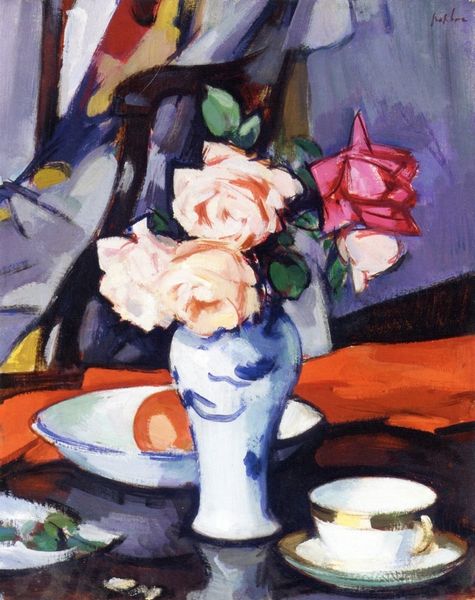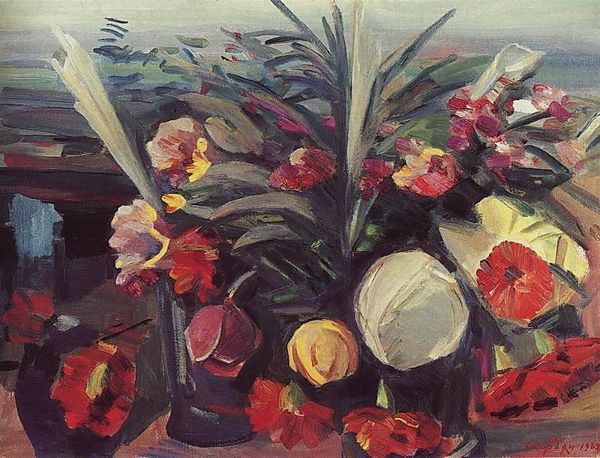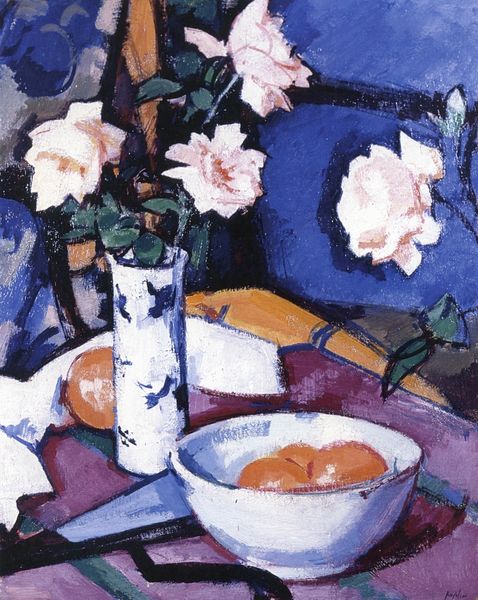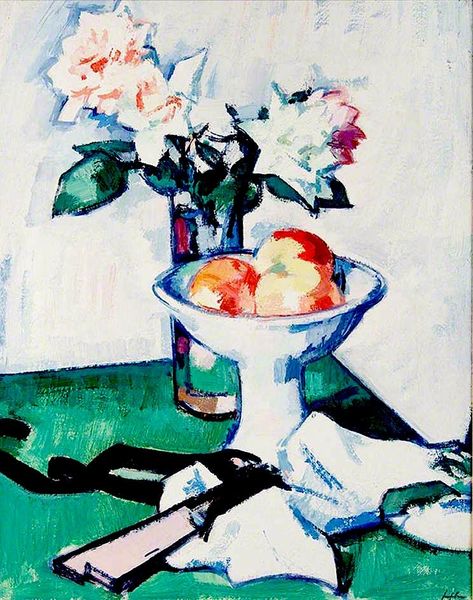
painting, oil-paint, photography, impasto
#
portrait
#
still-life
#
painting
#
oil-paint
#
flower
#
photography
#
oil painting
#
impasto
#
plant
#
expressionism
#
scottish-colorists
#
post-impressionism
#
modernism
#
expressionist
Copyright: Public domain
Curator: Here we have "A Vase of Pink Roses", an oil painting, by Samuel Peploe. It appears to be a still life composition, featuring pink roses prominently. Editor: My first thought is its intense color contrasts, particularly between the cool blues and the vibrant pinks. It almost feels…deliberately jarring. Curator: Interesting. Peploe was associated with the Scottish Colourists, a group known for their bold use of color and expressive brushwork, often influenced by post-impressionism. You see it in how the forms are simplified, the shapes aren't perfectly rendered, and the emotional impact of the color is really prioritized. The symbolism in floral paintings – roses particularly representing love, beauty, and transience – is layered on to those elements to achieve the intended impression. Editor: The impasto is very clear; the thick application of oil paint contributes to the sensory effect, emphasizing its materiality. And I wonder what the origins of the ceramic vase are – what social status would have been implied by possessing an object of that nature, and what its availability and consumption habits reflected about its role in this domestic scene, versus more commonplace vases. Curator: I see that consideration of class dynamics reflected in that the Chinese porcelain may symbolize wealth, certainly, but more broadly also a connection to a global trading network and consumerism. Though that meaning would also change over time and evolve along with cultural perceptions and consumption patterns. Editor: And also of the labor involved – both of Peploe’s labor of producing the image, and the material production processes needed to make the paint itself! Curator: Absolutely, which loops back to my perspective on the artist's vision: to emphasize and portray these layers of associated meanings. That there's an element of both tradition and rebellion. Editor: Examining the artwork in this way reminds us that objects are always situated within particular economies of production, labor, and symbolism, while you see the continuation and subversion of meanings throughout the years. Curator: Ultimately, looking at this, what really stays with me is the persistent ability of images to distill cultural histories.
Comments
No comments
Be the first to comment and join the conversation on the ultimate creative platform.
